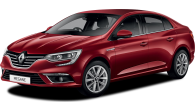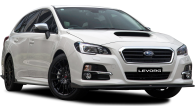The launch of a new-generation Volkswagen Golf is usually met with quite a bit of fanfare. It’s an iconic moniker that has set the benchmark for small cars for decades.
But the launch of the Mk 8 Golf in 2021 didn’t have the same impact of previous generations.
The new Golf uses the same Volkswagen Group MQB platform as the excellent Golf Mk 7, but with a fresh design, interior upgrades and a greater focus on in-car tech.
Thankfully, the boffins at Volkswagen decided it was a good idea to retain the wagon body style as well as the hatchback for the latest Golf.
Volkswagen is also one of very few mainstream manufacturers to still offer a station wagon in Australia.
Ford dropped the wagon version of the Focus in mid-2020, and Renault no longer sells its long-roof Megane. The only rival will be the new-gen Peugeot 308 that lands later this year, and the wagon version of Subaru’s WRX performance car, also arriving in 2022.
While the Golf wagon is a practical, spacious alternative to the sea of small SUVs, has Volkswagen done enough to maintain its title as the small-car benchmark?
Volkswagen Golf 2022: 110TSI Life
| Engine Type | Turbo 4, 1.4L |
|---|---|
| Fuel Type | Premium Unleaded Petrol |
| Fuel Efficiency | 5.9L/100km (combined) |
| Seating | 5 |
| Price From | $32,890 - $39,160 |
| Safety Rating |
|
Does it represent good value for the price? What features does it come with?
The week we tested the Volkswagen Golf 110TSI Life wagon, Volkswagen increased pricing for all Golf variants by between $640 and $840.
The Golf Life wagon went up by $840 and now costs $37,290 before on-road costs. It’s the highest-grade Golf wagon until the April arrival of the hi-po Golf R wagon ($69,990). The entry-level Golf wagon starts from $34,490.
The only option fitted to the test car was premium paint ($900). Buyers can add option packs including the 'Sound and Vision Package' ($1500) and 'Comfort and Style Package' ($2000).

Standard features include rain-sensing wipers, 17-inch alloy wheels, keyless entry and start, power folding and heated exterior mirrors, auto-dimming rear-view mirror, digital instrument cluster, ‘comfort’ cloth seats, a 12-volt socket in the boot area, three-zone air conditioning, 10-colour ambient lighting, LED head and tail-lights and chrome roof rails, as well as a suite of safety features (see section below).
Multimedia consists of a 10-inch touchscreen with satellite navigation, wireless Apple CarPlay and Android Auto, proximity sensor, gesture and voice control and vehicle functions.
DAB+ digital radio has just been rolled out as standard across the range as part of the model year 2022 update.
It’s difficult to compare the Golf’s pricing and specification with its small wagon rivals because, as of publication, there aren’t any.

Peugeot will launch its new-generation 308 hatchback and wagon in the third quarter but pricing is yet to be announced. While the incoming Subaru WRX wagon is a performance model and will likely carry a higher price tag and be pitched at a different buyer.
There are, of course, a long list of small SUVs that some buyers might consider instead of a wagon, but none will have the cargo space or rear-seat space of the Golf wagon.
VW’s small SUV, the T-Roc, is available in 110TSI Style guise from $35,500 but it lacks some of the tech features in the newer Golf, like wireless charging, wireless Apple CarPlay and Android Auto, and it has a smaller 8.0-inch touchscreen using VW’s previous-generation multimedia system.
Is there anything interesting about its design?
The latest Golf is unmistakably a Golf. The wagon has a very similar silhouette to its predecessor, although the roofline and tailgate slopes more on the new version.
The new Golf has a more modern look thanks to slimline LED headlights and narrower tail-lights. It’s not a dramatic change, but adds a sharper edge to Golf hatch and sedan. If it ain’t broke…
While it’s not the hue I would opt for, the unusual 'Pomelo Yellow' colour – a $900 option – of our test car certainly got some looks. It’s polarising, but it’s also easier to spot in a packed shopping centre car park.

The design of the 17-inch 'Ventura' alloy wheels is striking and gives the wagon a sporty look.
Minimal is the name of the game when it comes to cabin design. The new Golf has lost a number of buttons with several features now housed in the multimedia screen.
The clean horizontal lines and quality materials give the Golf a semi-premium vibe, which will appeal to many buyers. If you like a cabin with more buttons and lots of contrasting colours and design elements, this might not be the car for you.

How practical is the space inside?
Practicality is one of the key selling points for a station wagon. And in that regard, the Golf excels.
In the front row, console storage includes a long phone or key slot, wireless charging hub, and a small central bin.
There are two USB-C ports and a 12-volt plug. The cupholders function as one open space for larger items or you tap a button and it encloses and separates the cups. Clever.
The front door bins are huge and can stow tall and bulky bottles with ease.
The grey pattern cloth trim is a welcome inclusion to the Golf Life, especially if you’re not a fan of leather. The front seats have good thigh and upper body support and they are incredibly comfortable. Seat adjustment is manual.

The door inserts are plain but a brushed metal panel connecting the doors and dash breaks it up nicely.
If, like me, you occasionally rest your hand on the gear shifter, the Golf’s tiny gear selector might disappoint. However, after a week with the car I adjusted to it.
The appealing cabin materials and overall build quality add to the Golf wagon’s appeal, as does the minimal dash design.
However, by removing climate control buttons and replacing them with a haptic selector on the dash that then brings up menus on the touchscreen, it adds complexity where it’s not needed.
After hitting the ignition button, the screen often lags – this happened with the reversing camera and climate controls – and this wouldn’t be an issue with regular buttons.

The system includes ‘classic’ climate controls and ‘smart’ controls that use screen commands like ‘warm hands', or ‘cool my feet’. We stuck with classic.
VW’s new multimedia system requires a little familiarisation with the menu items and home button, but it’s a decent system with cool graphics.
It’s well ahead of systems from Toyota, Nissan and other Japanese brands, but not as intuitive as the system found in new Kia and Hyundai models. The digital instrument cluster, however, is clear and uncomplicated.
The Golf wagon offers excellent visibility thanks to a huge glasshouse.
Helping the case for the Golf wagon over a small SUV is the incredible rear seat space. It offers loads of legroom – more than any small hatch or SUV we can remember – ample toe and knee room, and acres of headroom. I am six foot (183m) tall and was nowhere near scraping the headliner.
The rear seats have some support and a comfort level that would be ideal for a long road trip.
Rear-seat occupants have access to climate controls, lower air vents, two USB-C ports, wide and tall door bottle storage, map pockets and a centre armrest (with two cupholders) that also doubles as a ski port.
The rear seat base doesn’t adjust but you can lower the 60/40 rear seats via a lever in the boot or on top of the seatbacks.
Open the power tailgate and you’ll be greeted by a sizeable boot that can swallow 611 litres when the rear seats are in place and 1642L when they are folded.
The incoming Peugeot 308 wagon comes close at 608L and 1634L respectively. But just try and find that much space in a small SUV. The T-Roc has cargo capacity of 392 litres.
There are storage nooks behind the wheel arch and some secure under-floor storage where the cargo blind can be stowed when it’s not in use. The Golf wagon comes with a space-saver spare wheel.
What are the key stats for the engine and transmission?
All non-GTI or R Golf variants are powered by VW’s ubiquitous 1.4-litre four-cylinder turbocharged petrol engine with power and torque outputs if 110kW at 5000rpm and 250Nm at 1500-4000rpm.
It drives the front wheels via an eight-speed torque converter automatic transmission, replacing the seven-speed dual-clutch auto of the Golf 7.

VW says it can cover the 0-100km/h dash in 8.8 seconds.
It has independent front and rear suspension, electro-mechanical power steering, and an 11-metre turning circle.
How much fuel does it consume?
The Golf is fitted with a fuel-saving idle-stop system, and VW claims the wagon consumes 5.9L/100km on the combined cycle.
After a week of freeway and urban driving, we recorded quite a bit higher at 9.0L/100km.
The Golf requires a minimum of 95 RON fuel at the pump and has a 50-litre fuel tank.
Warranty & Safety Rating
What safety equipment is fitted? What safety rating?
The Golf Mk 8 was awarded a five-star ANCAP rating in 2019 and it applies to the whole range.
It is fitted with eight airbags, although it does not have a front centre airbag that helps prevent occupant-to-occupant injury in a side collision.
The 2022 Golf range comes standard with an extensive list of standard safety gear, including autonomous emergency braking (AEB) with pedestrian and cyclist detection and oncoming vehicle braking when turning, adaptive cruise control with stop and go function, side assist with rear cross-traffic alert, driver attention alert, emergency assist, an exit warning, lane keep assist, traffic jam assist, front and rear parking sensors, a reversing camera and a blind spot monitor.

On the freeway the Golf’s adaptive cruise is quick to respond, slowing when required and speeding up when you move into another lane with no vehicles ahead.
However, operating it takes some getting used to. To increase or decrease the speed by 1km/h, you need to select the Set or Rest button, rather than the speed up or down buttons which increase it by 10km/h. Other brands manage a more logical setup. Not sure why VW has to make it more complex than it needs to be.
The lane keeping aid was sometimes slow to respond, allowing the vehicle to cross line markings without any warning or intervention.
What does it cost to own? What warranty is offered?
The Golf range is offered with a five-year/unlimited kilometre warranty and a year of free roadside assistance. The servicing schedule is every 15,000km or 12 months, whichever occurs first. VW offers capped-price servicing plans of three or five years. Five years of servicing will cost a tick under $3000.
What's it like to drive around town?
The Golf has been the driver’s pick in the small-car segment for years, and that’s against some serious competition from the Mazda3, Ford Focus and more. So there’s a lot of pressure on the new model to set a fresh benchmark.
Some turbo lag is evident on take-off and the traction control kicks in when accelerating hard from a standing start, but the system keeps everything in check.
Once up and running, the 1.4-litre unit is responsive and delivers linear performance, rarely missing a beat. Steep ascents don’t blunt the Golf’s onward march and the slick eight-speed box changes gears without fuss. It’s a nice change from the old DCT.

Steering response is excellent and like most VW models it’s weighted on the lighter side.
It maintains composure when cornering but there is some lateral movement. Thankfully, the Golf maintains its dynamism for Mk 8. It’s good to know you can still have fun in a Golf that doesn’t have a GTI or R badge.
The ride is a little jittery, especially on uneven pockmarked roads, and there’s some vibration through the steering wheel. Mid-corner bumps can upset the ride – it was a bit rough on a loose road shoulder – but it’s far from a deal-breaker.
The ride quality in urban settings is hard to fault and the cabin is well insulated from outside intrusions.
Verdict
VW basically owns the small wagon segment now and the soon-to-arrive full-fat Golf R wagon will only strengthen its position.
If you need more cargo space than a small SUV or hatch can offer, or you’d rather not join the SUV brigade, check out the super practical Golf wagon.
Unfortunately, the new Golf doesn’t represent a huge leap forward compared with the Golf 7.5. But that was always going to be a tough task.
The practicality, space, standard safety, drive experience and some of the new on-board tech ensure that the Golf is still one of the top picks in the small-car segment. And even though it’s only marginally better than the old Golf, it’s still a very good car.
Pricing Guides












.jpg)















.jpg)

.jpeg)
.jpg)

.jpg)
.jpg)


.jpg)

.jpg)
Comments